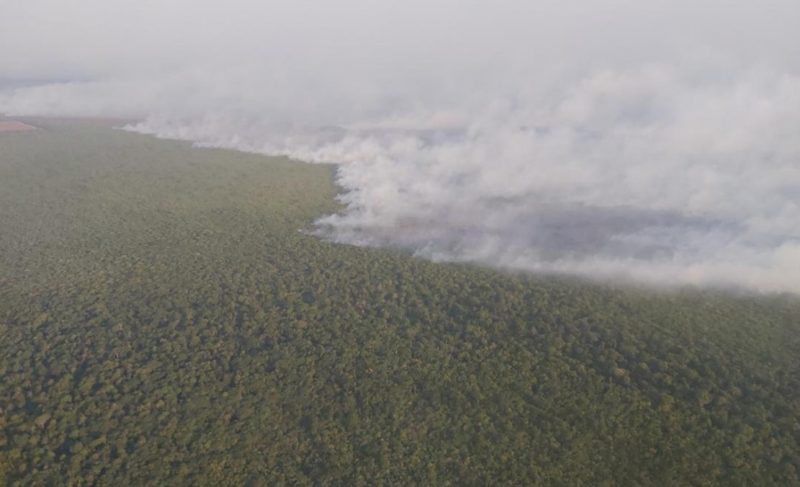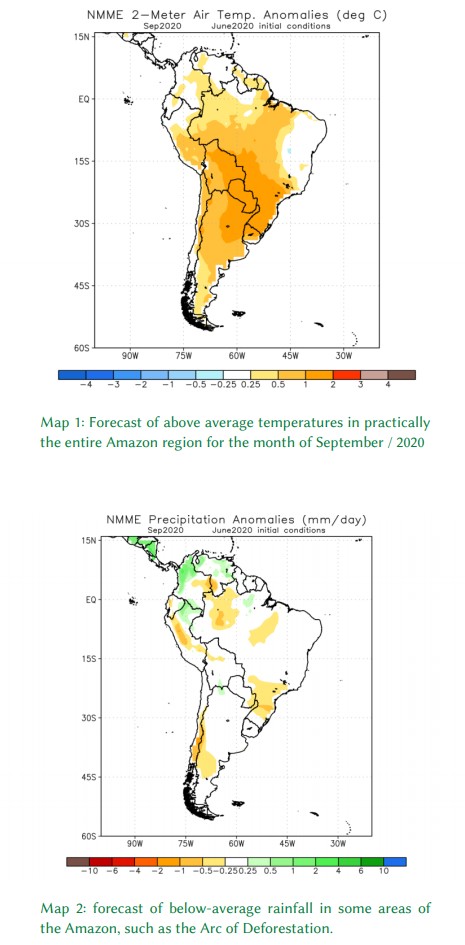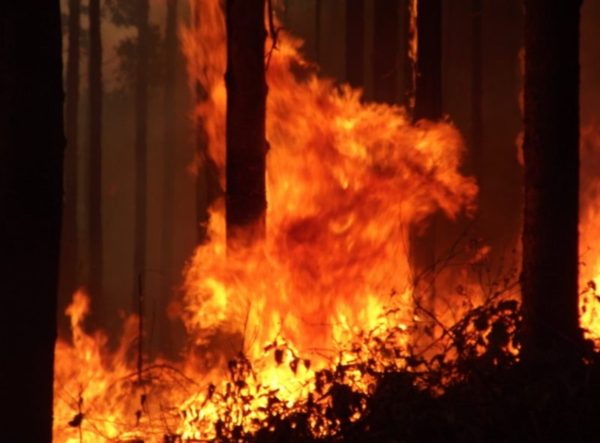TECHNICAL NOTE – ATLANTA/GA – JUNE/2020
By Romao, M.; Masters, C. and Pires, L.

The burning season in the Brazilian Amazon begins in July and continues until
October. Our forecast for this year is that the number of fires may be above the
average expected for the period, due to the above-average deforestation and forecasts
of below-average rainfall, accompanied by high temperatures, thus generating a new
socio-environmental crisis.
In addition to all the problems mentioned above, we will also have the aggravating
increase in the cases of Covid-19, whose peak is being predicted during the same
period of time that the burning season occurs in the Amazon region.
DEFORESTATION – Increase in May
The deforestation alerts in the Amazon registered a record in May 2020. There were
829 km², the highest total for the month in the five years of the historical series of
this indicator. The number is 12% above that recorded in May 2019. Data from INPE
(In English: National Institute for Space Research) in Brazil, indicate that
deforestation in the Amazon was 829 km² in May this year – while in May 2019, it was
738 km². When consolidating the deforestation alerts issued between August 2019 and
May 2020, and comparing with the same period of the previous year (August 2018 to
May 2019), the increase is 78%. There were 3,653.42 km² under alert, and now it is
6,498.8 km².
All this wood felled by deforestation is scattered on the ground and must be burned
to make room for new pastures and agricultural areas. What we are seeing is that
there will be a huge supply of combustible material to be consumed over the next few
months, which could generate uncontrolled fires.
FIRE FORECAST ABOVE AVERAGE
Long-term weather forecast models indicate a temperature trend above the historical
average (map 1) in some Amazonian areas during this burning season. These same
models also indicate below-average rainfall (map 2) for the same period. If these
forecasts are confirmed, we will have a situation of worsening droughts that
commonly occur in the region.

To make matters worse, one of those areas with pessimistic predictions is the Arc of
Deforestation, the region that causes the most desrutction to the forest, on the border
between the states of Pará and Mato Grosso. Therefore, a more severe drought will
induce an intensification of fires in deforested areas, which in turn, should generate
an enormous amount of smoke and pollution in the atmosphere.
Usually, in the first months of the year, fires are less frequent. In 2020, however, 50%
of the occurrence of fires at that time was explained due to deforestation. From
August 2019 to May 2020, 78,443 fires were detected in the Amazon, an amount
higher than the same period of 2018-2019.
The COVID-19
If this forecast of maintaining an increase in deforestation and an increase in fires is
maintained, the end result will be an increase in smoke over much of the Amazon.
The smoke will degrade air quality, causing serious respiratory diseases, especially in
children, the elderly and Indians; that will congest hospitals. This year, however, we
have the aggravating factor of Covid-19 which also strongly affects people’s airways.
It is important to point out that the summit of Covid-19 has not yet been reached in
Brazil and this should only occur in July or August, that is, together with the increase
in the incidence of smoke, therefore the combination of smoke from burning more
Covid-19 may cause a collapse in the already fragile Amazon hospital system.
MITIGATION
The only way this calamitous situation could be reversed would be if we were able to
effectively control deforestation—which, in turn, would reduce the amount of fires—or
if there was above average rainfall, but that is not what the models predict, at least
until this moment.
CONCLUSION
We are facing a perfect storm forecast that should affect not only the population of
large cities in the Amazon, but also isolated indigenous villages, which today are
already suffering from cases of Covid-19 such as the case of the Yanomami Indians.
If this forecast of a more severe drought really occurs, this scenario will become even
more critical, leading to a socio-environmental disaster in the face of a moment of
high vulnerability of the Brazilian population and its health system.
The Brazilian government agents are trying to face this next burning season, putting the
military of the armed forces on the front line. However, thecontingent is not enough to
serve the entire Amazon territory. It is also up to the awareness of the Amazon population
itself, to avoid the use of fire in these coming months.
We inform that we are already monitoring the fires in the Amazon, follow our daily
news on social medias:
WorldEnvironmentalCo (@WorldEnvironme1) / Twitter
https://www.facebook.com/worldenvironmentalconservancy.org
https://www.linkedin.com/company/world-environmental-conservancy/
https://www.instagram.com/we_conservancy/
https://www.youtube.com/channel/UC5VpGv1vJ8c4WynDbZ3nX0A

